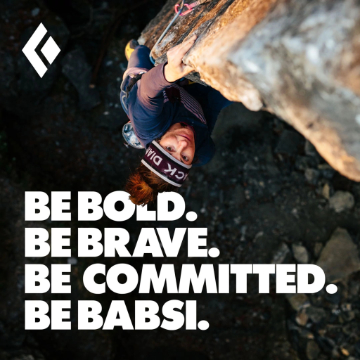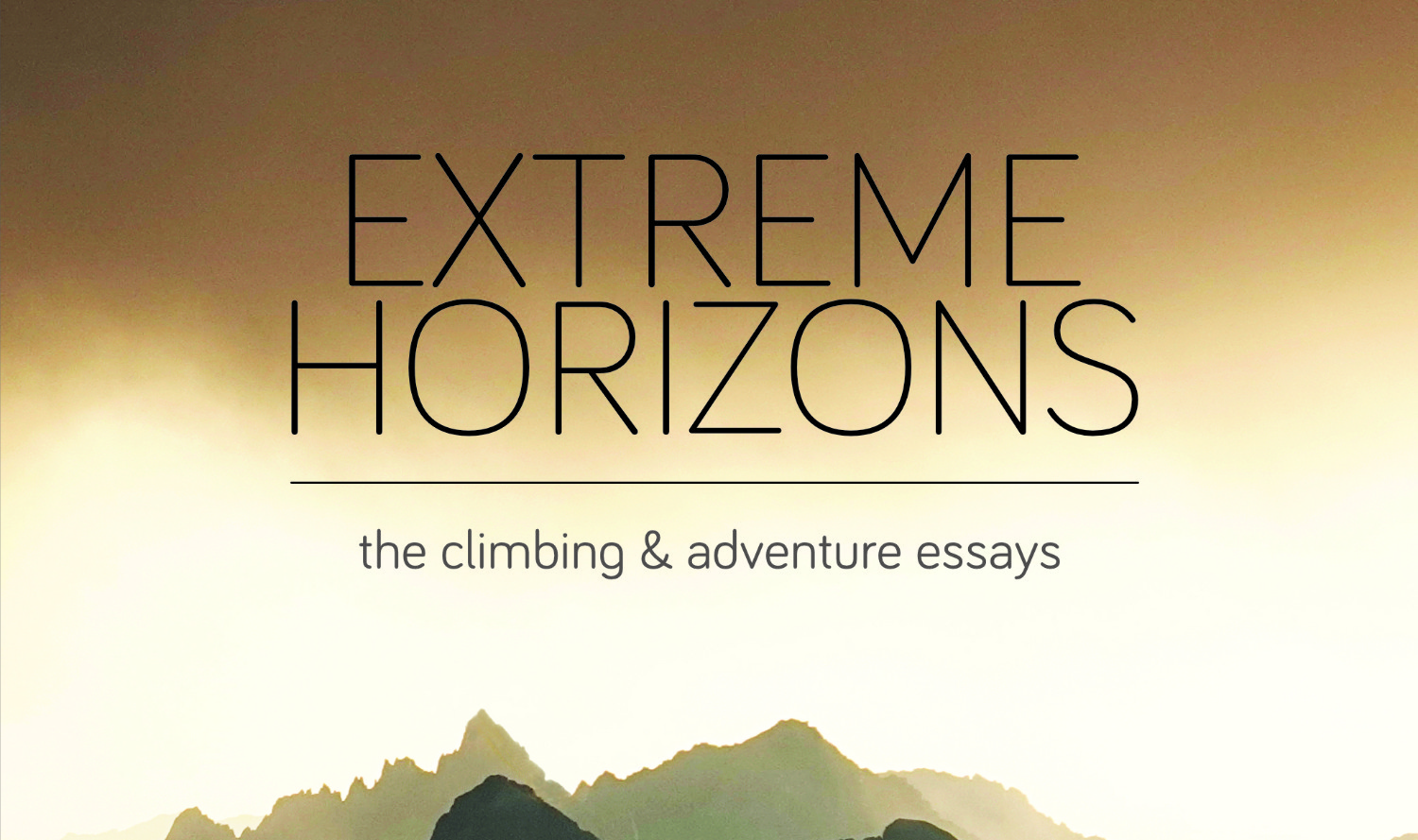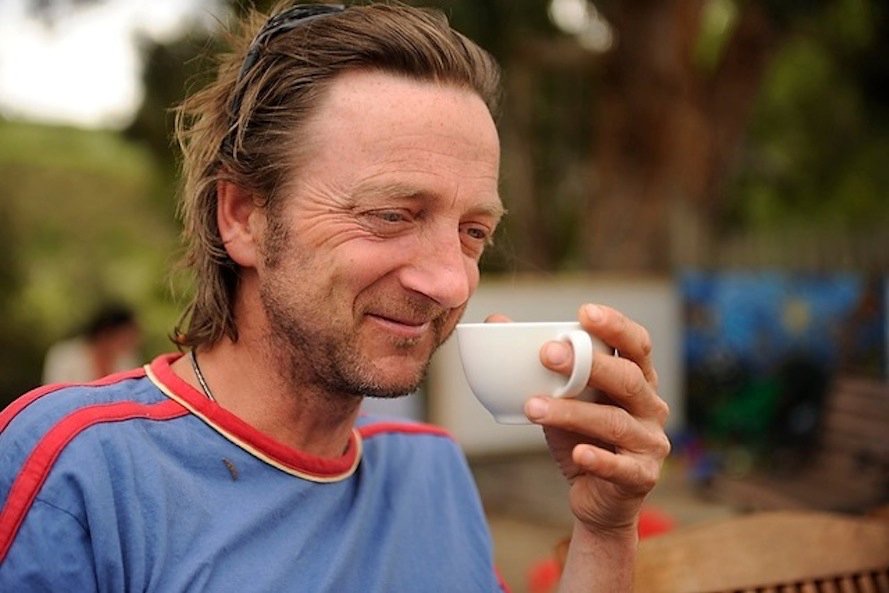Raphael Slawinski is a world-class Canadian alpinist with a penchant for humility, difficulty, and limestone choss. Raphael has established some of the hardest mixed and ice lines in the world, opened new alpine routes in Pakistan, and consistently avoids hyping or generously grading his achievements. He often climbs in the Canadian Rockies, which is notorious for its loose ('chossy') limestone, but when he climbs he demonstrates many years of experience. He works as a Physics Professor at Mount Royal University in Calgary and will probably dislike the tag, 'world-class choss master.'
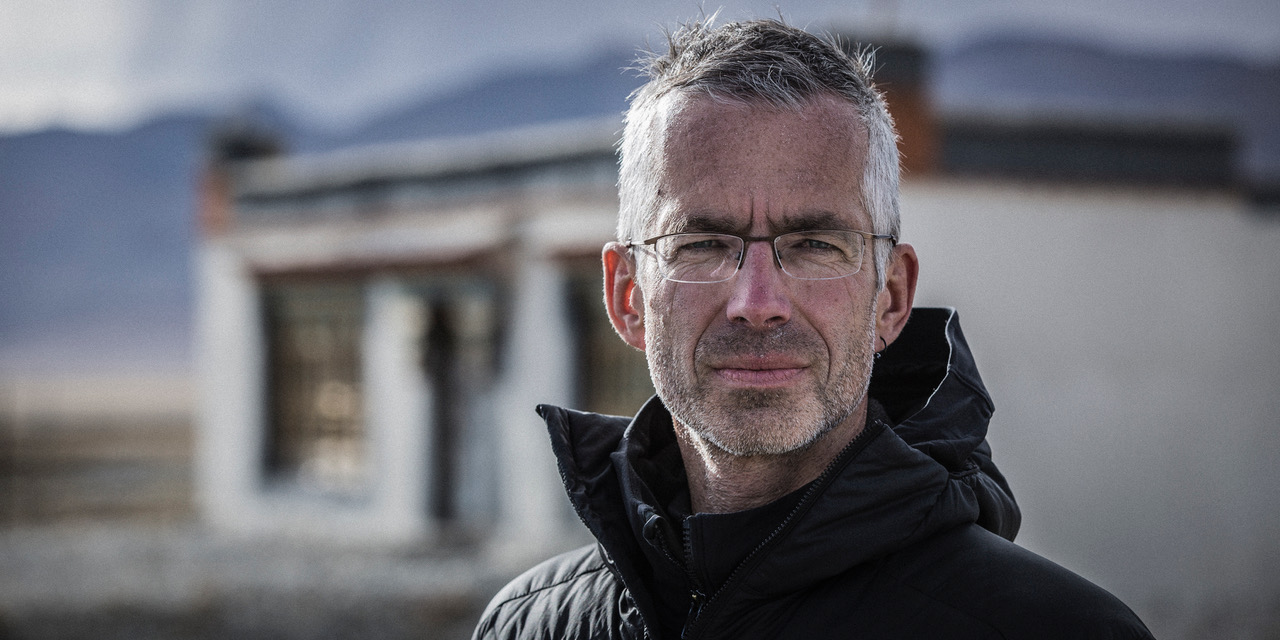
Raphael Slawinski. Photo: Daniel Bartsch
You have a reputation for being a harsh route grader…?
Well, yes. In my defence, some things I just don’t find that hard in the mountains, but you’ll rarely find me arguing to downgrade a rock route. Maybe that’s me just being honest with what I think is the grade, but maybe I’m just playing to my strengths - and mixed climbing is one of them. Having said that, grades should all be relatable. There’s a certain ego element to my grading - one of my greatest fears is that someone downgrades one of my routes.
The grading in the Canadian Rockies was just like in Arapiles (Australia). The first ascensionist would give it the lowest grade they could whilst still keeping a straight face. Maybe I’ve adopted that mentality as well.
But at the same time, I don’t think I’m deliberately sandbagging people - maybe the pitch just isn’t that hard. Then again, I was at the sport climbing crag yesterday and someone said, ‘after the crux it’s easy to the chains - 12.a jugs!’ But I was thinking ‘no way, it’s much harder! 12.a jugs my ass!’
It’s useful to remember that grades aren’t worth getting too wound up about. In the end, it’s just a grade, which is just an indication, and unfortunately we’ve become obsessed by minute differences. As long as the grade is roughly right and gives a rough idea, that’s all that matters.
I heard a rumour you gave something M7++ in order to avoid giving it M8?
I don’t think I’ve given something that, but still. To this day, I don’t think I’ve climbed M8 in the mountains. M8 is pretty damn hard and to do that onsight, on gear, on an alpine face is flipping hard.
I saw Luka Lindic climb a new route on Mt. Fay with Ines Papert and Brette Harrington called The Sound of Silence. They gave it M8 but it wasn’t an onsight (he aided and cleaned it first). But remember, it was Luka. If anyone can climb M8 in the alpine, he can.
The grading in the Canadian Rockies was just like in Arapiles (Australia). The first ascensionist would give it the lowest grade they could whilst still keeping a straight face. Maybe I’ve adopted that mentality as well.
But at the same time, I don’t think I’m deliberately sandbagging people - maybe the pitch just isn’t that hard. Then again, I was at the sport climbing crag yesterday and someone said, ‘after the crux it’s easy to the chains - 12.a jugs!’ But I was thinking ‘no way, it’s much harder! 12.a jugs my ass!’
It’s useful to remember that grades aren’t worth getting too wound up about. In the end, it’s just a grade, which is just an indication, and unfortunately we’ve become obsessed by minute differences. As long as the grade is roughly right and gives a rough idea, that’s all that matters.
I heard a rumour you gave something M7++ in order to avoid giving it M8?
I don’t think I’ve given something that, but still. To this day, I don’t think I’ve climbed M8 in the mountains. M8 is pretty damn hard and to do that onsight, on gear, on an alpine face is flipping hard.
I saw Luka Lindic climb a new route on Mt. Fay with Ines Papert and Brette Harrington called The Sound of Silence. They gave it M8 but it wasn’t an onsight (he aided and cleaned it first). But remember, it was Luka. If anyone can climb M8 in the alpine, he can.

Attempting a still-unclimbed “last great problem” in Kananaskis Country. Photo: Alik Berg.
Are you a ‘harsh but fair’ marker in your Professor grading?
I don’t know what students say behind my back. I think it varies: some of the University courses I teach are ‘Introductory Astronomy’ courses for the general population - or ‘Scopes for Dopes’ as it’s fondly referred to. I grade fairly on these courses because I realise these students are non-majors. I actually looked at my student comments online (there’s a website called ratemyprofessors.com) and students say, ‘it’s an easy class, an easy A.’
However, when it comes to my Quantum Mechanics course, I’ve had quite a few grade discussions with students. I say, ‘you got an A-. This course is pretty damn hard and you should be very happy with that!’ Actually, I was sad to see I didn’t have a red chilli pepper next to my name on ratemyprofessors.com. I must try harder!
Can you tell me a bit about your work in Quantum Mechanics? I remember texting back and forth about it when we you and Alik Berg were at the Pumari Chhish base camp in 2018.
The Many Worlds theory of Quantum Mechanics basically takes Q.M. completely at face value. It accepts the mathematical formulas of Q.M. The interpretation of those formulas which folds out most naturally is this Many Worlds interpretation, which means - very roughly speaking - everything that can happen, does happen.
Therefore, there is a world in which Alik and I were successful at climbing Pumari Chhish. Every possible scenario of every possible life is played out in another world. It’s not a faraway place, they’re kind of parallel universes which can interfere - in the technical sense of the world - of Quantum Mechanic’s propositions. However, by the time those parallel worlds become sufficiently different for us to be able to tell the difference, (for example, we either climb the peak or we don’t), they’re too different to interfere in the Q.M. sense. At that point, they become completely separate and they don’t meet, like ships in the night. They don’t ‘see’ one another.
If you’re interested, you should look up Prof. David Deutsch. He’s one of the fathers of Quantum Computing. He’s one of the big proponents of the Many Worlds interpretation. He’s one of the absolute top experts in the area and a Cambridge professor.
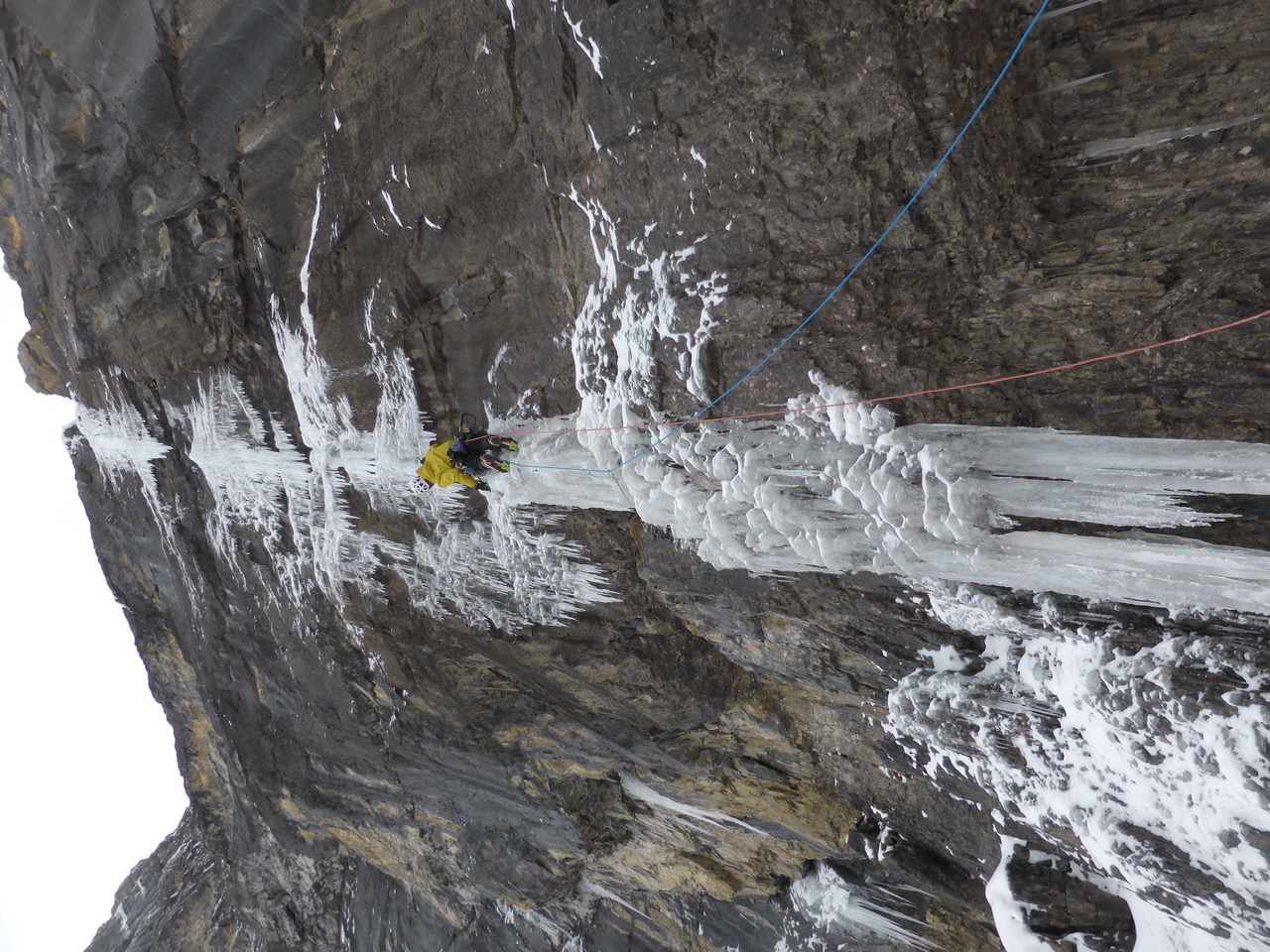
Trying to convince myself that the next piece is going to be better than the last three on the rarely formed Sound and Fury. Photo: Nick Bullock.
Can you tell me about your new route on K6 West (7040m) in Pakistan, which you climbed with Ian Welsted in 2013?
For sure, it was one of the biggest and best things I’ve ever done, and it was one of those things where a lot of stars aligned. That was my fourth trip to Pakistan, my third with Ian, and we’d had many ‘sort of’ failures before having a success. We’d gotten up stuff on previous trips, but they were often Plan B objectives. We made classic errors on previous trips: we got sick or we didn’t acclimatise well, for example.
So on K6 West, we stayed healthy, we acclimatised well, we chose a route which suited our abilities, and we could bring to bear our experience from a quarter century of climbing in Canada.
Ian is more a fitness guy and I’m more of a tech guy, so we compliment each other well. We had similar ideas about stuff - like risk, for example. I’ve had situations where partners have different ideas about risk in the mountains. However, with Ian there was no point where we had differing decisions - we were very much ‘one mind.’
On K6 West, everything lined up. We knew how to climb those bigger peaks and we were a well matched team. We also had an element of luck - being in the right place at the right time takes luck. On the route there were definitely a couple of necky pitches where I was wondering if I should continue - things can go wrong, and if they went wrong up there, they’ve go very wrong. Maybe they did in some other universe… but thankfully not in mine.
During one of the crux sections on K6 West, the rock was quite shattered for three or four pitches. It was also a sandy type of granite, which meant there was sediment in the ice. The ice had an almost golden yellow colour to it. There were small icicles hanging down on one of the crux pitches, and I placed ice screws vertically into them. The ice was super dense and the screws took a lot of energy to place, which gave me confidence in their strength. I thought, ‘I could fall onto these screws and they’d hold me.’
Ian and I are both of the generation where, when the going gets hard, the cameras go away. It’s not in our nature to keep them out. I don’t think we have a single photo from the crux pitch, and taking a photo is the last thing on my mind. That’s where having a helmet cam would do the trick, but GoPro cameras on helmets are just not for me. As an Old School friend of mine said, ‘it’s a slippery slope: one day you’re stick-clipping, and the next you’re sucking dick in a parking lot!’
What’s your take on Social Media?
I actually have an Instagram account, and I’m hoping to get 1000 followers without posting a single photo. [Help Raph on his mission to get 1000 followers here.] I had an email exchange with Nick Bullock. I asked, ‘why do you have a blog but no Instagram?’ Nick responded, ‘Instagram is in your face. A blog is more of a choice for people to search and find it. Instagram is used in so many unpleasant ways, like creating FOMO, and I don’t want to be associated with that.’
For sure, it was one of the biggest and best things I’ve ever done, and it was one of those things where a lot of stars aligned. That was my fourth trip to Pakistan, my third with Ian, and we’d had many ‘sort of’ failures before having a success. We’d gotten up stuff on previous trips, but they were often Plan B objectives. We made classic errors on previous trips: we got sick or we didn’t acclimatise well, for example.
So on K6 West, we stayed healthy, we acclimatised well, we chose a route which suited our abilities, and we could bring to bear our experience from a quarter century of climbing in Canada.
Ian is more a fitness guy and I’m more of a tech guy, so we compliment each other well. We had similar ideas about stuff - like risk, for example. I’ve had situations where partners have different ideas about risk in the mountains. However, with Ian there was no point where we had differing decisions - we were very much ‘one mind.’
On K6 West, everything lined up. We knew how to climb those bigger peaks and we were a well matched team. We also had an element of luck - being in the right place at the right time takes luck. On the route there were definitely a couple of necky pitches where I was wondering if I should continue - things can go wrong, and if they went wrong up there, they’ve go very wrong. Maybe they did in some other universe… but thankfully not in mine.
During one of the crux sections on K6 West, the rock was quite shattered for three or four pitches. It was also a sandy type of granite, which meant there was sediment in the ice. The ice had an almost golden yellow colour to it. There were small icicles hanging down on one of the crux pitches, and I placed ice screws vertically into them. The ice was super dense and the screws took a lot of energy to place, which gave me confidence in their strength. I thought, ‘I could fall onto these screws and they’d hold me.’
Ian and I are both of the generation where, when the going gets hard, the cameras go away. It’s not in our nature to keep them out. I don’t think we have a single photo from the crux pitch, and taking a photo is the last thing on my mind. That’s where having a helmet cam would do the trick, but GoPro cameras on helmets are just not for me. As an Old School friend of mine said, ‘it’s a slippery slope: one day you’re stick-clipping, and the next you’re sucking dick in a parking lot!’
What’s your take on Social Media?
I actually have an Instagram account, and I’m hoping to get 1000 followers without posting a single photo. [Help Raph on his mission to get 1000 followers here.] I had an email exchange with Nick Bullock. I asked, ‘why do you have a blog but no Instagram?’ Nick responded, ‘Instagram is in your face. A blog is more of a choice for people to search and find it. Instagram is used in so many unpleasant ways, like creating FOMO, and I don’t want to be associated with that.’
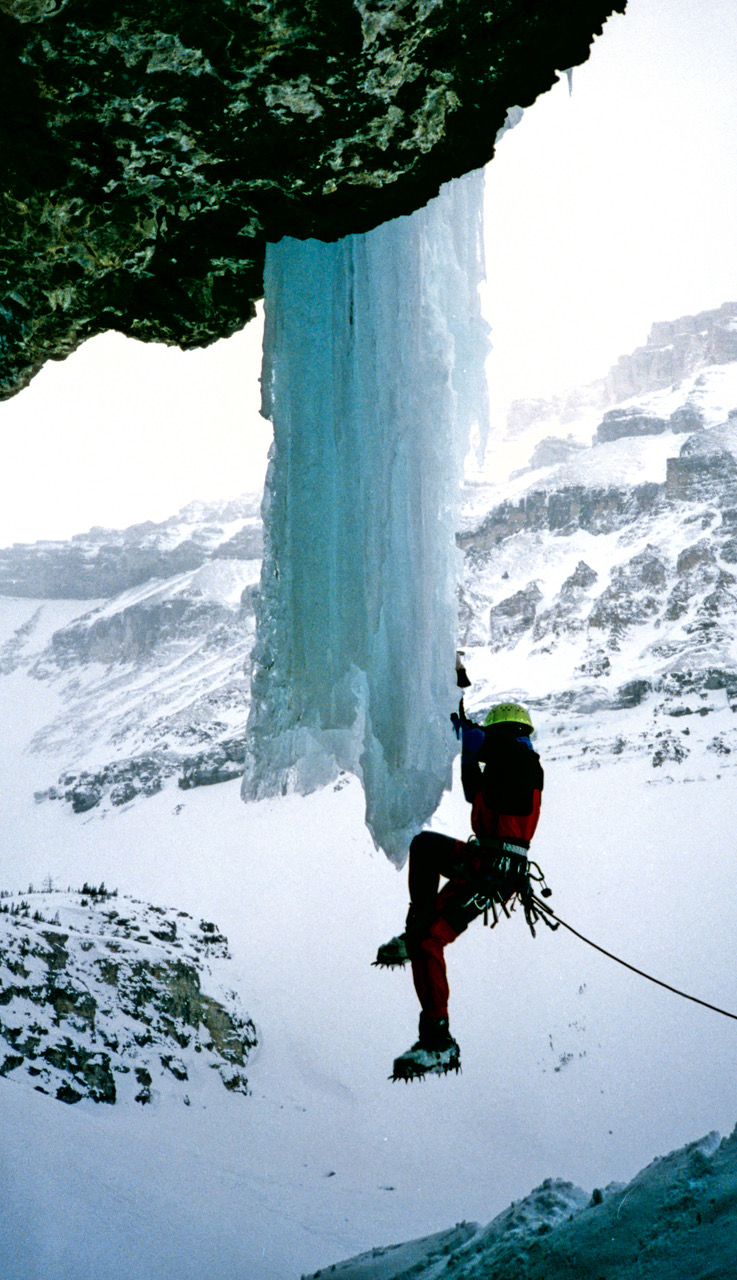
Me doing my best Alex Lowe imitation (you kids remember Prophet on a Stick?) on the broken off Killer Pillar. For the record, I didn’t make it up. Photo: Raphael Slawinski Collection
What’s your take on falling off when mixed climbing?
I fell off Suffer Machine [a popular 200 metre mixed and ice climb in Canada]. It was in 1997, almost a quarter century ago. The route is on the Stanley Headwall and this was in the early days of the mixed climbing revolution. It was put up by Dave Thompson (who put up Real Big Drip and RocketMan, two super-classics).
Dave put up a direct start to the hanging ice dagger pitch on Suffer Machine. He gave it M8, so I was drawn to repeat it. I remember thinking ‘what the hell is M8?’ I onsighted the rock climbing portion and then got onto the hanging dagger, gently climbing higher and higher. Initially, it was quite obviously free-hanging and fragile, so I just tapped up it. Higher up, where it seemed to be well attached to the rock, I started swinging more normally. I remember hearing a dry crack! - the whole dagger fractured where my tool was and I fell off.
The ropes were damaged as they went over an edge near the last quickdraw and they core shot. The core shot was about 12 metres from the end of the rope, so I know I took about a 25 metre fall. With rope stretch, my feet just about kissed the ground! Had I been a body-length higher, I would’ve hit the ground. I ended up lower than the belay as it was on a raised ledge. As I went past the ledge I raised my arms to shield myself from falling ice, and one arm took a big hit. I damaged a nerve in my arm, and I wasn’t sure if I’d get function back in the arm… but thankfully I did. Unfortunately it’s all a true story.
Most people seem to have close calls in climbing, where they walk away due to sheer dumb luck. This was one of those experiences. It was a long-enough fall that I had time to think, ‘this is it.’ I was very lucky to survive and I never want to experience that again. You don’t get away with it like that often.
What did you learn from this experience?
This was ’97 and I was getting quite seriously into climbing. Earlier that season, we’d made the first free ascent of Mr. Hulot... [another mixed route on the Stanley Headwall]. Almost like clockwork, I seemed to have a close call about every 6 months. I learned that I had to temper my boldness with a little more reflection.
Another example is the route Shooting Gallery on Mt. Andromeda, the year before my fall on Suffer Machine. I took a Factor 2 fall onto the belay: the ice wasn’t in condition, it was too warm and the ice was slush. I was going up slush without gear but it didn’t occur to me to retreat. I just thought, ‘oh, this is just what alpine climbing is like.’
I’ve learned to think a little more deliberately now. If you make a decision, do it with your eyes wide open; don’t walk into something through ignorance.
An example is on K6 West with Ian. I was climbing up a detached strip of ice with marginal gear - perhaps the neckiest pitch of the route, but not hardest. I thought, ‘this might be a good time to start backing off.’ The fact that thought came into my head was positive. I weighed up the situation, made a conscious decision, and thought, ‘I’m going to go for it, but I know the sport.’ Scott Backes (a larger-than-life American climber with lots of great stories) said, ‘it’s not the unclimbable pitch that scares him in the mountains, it’s the pitch which you can just squeak by. If it’s too hard to climb then fine, you bail. But if you can just about climb it, that’s dangerous.’
It’s scary when you think ‘I could probably climb that.’ That’s bad. I can remember being on one of those alpine routes above Canmore with Ian Welsted and thinking, ‘this is too climbable’, and that’s not a good thing. I said, ‘I can keep climbing, something is wrong!’ Ian was very confused!
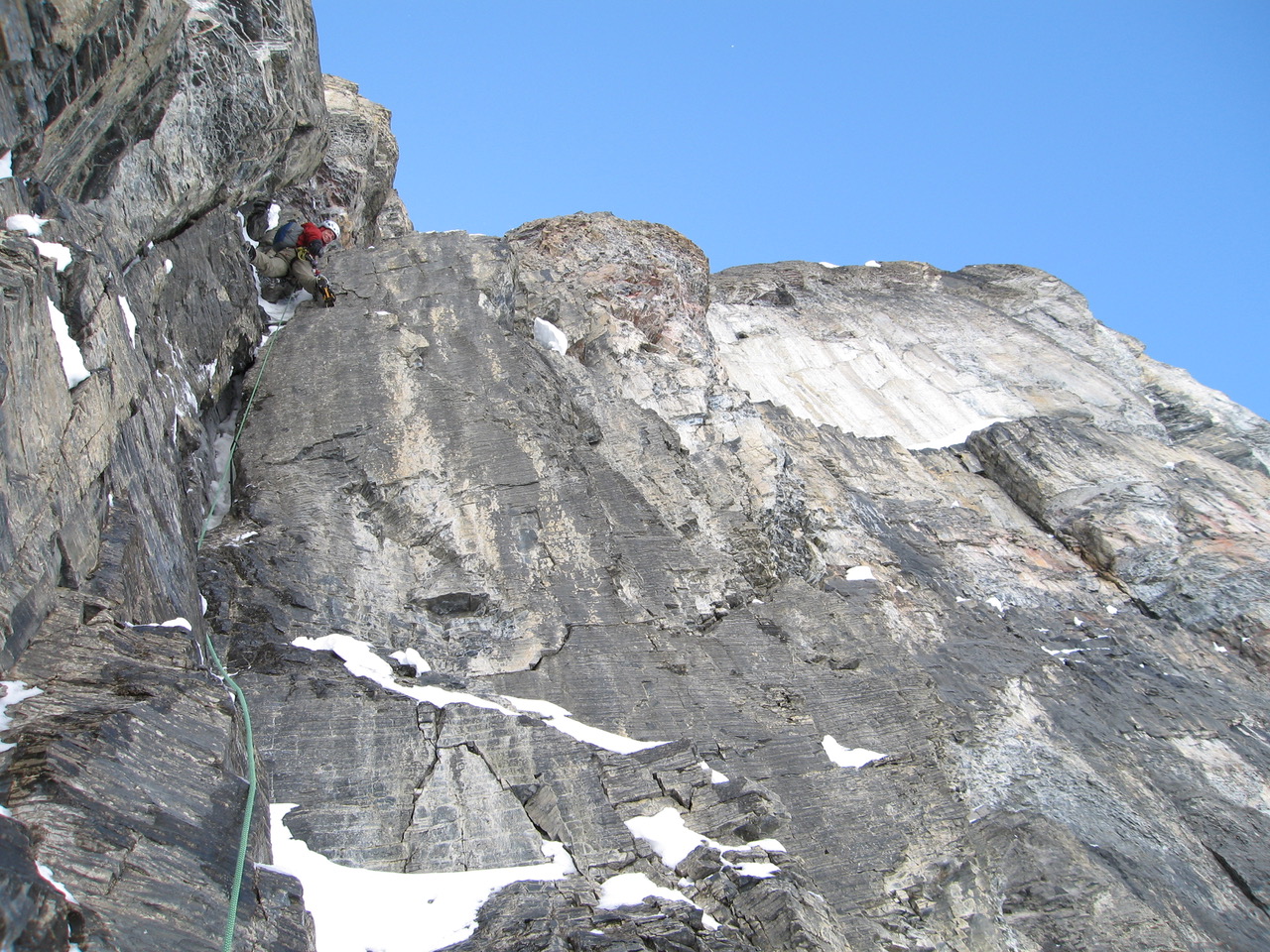 The Doctor, the Tourist, His Crampon and Their Banana: One of the coolest new lines I’ve ever done, aesthetic line and excellent climbing. Photo: Scott Semple.
The Doctor, the Tourist, His Crampon and Their Banana: One of the coolest new lines I’ve ever done, aesthetic line and excellent climbing. Photo: Scott Semple.If you were to share a belay ledge with anyone, who would it be?
Someone who’s always been a huge inspiration to me is Voytek Kurtyka. I’ve been fortunate enough to get to know him a bit and spend a few hours having absolutely fascinating conversations. He doesn’t climb these days - he’s into gardening. Sometimes we put people on pedestals and they might be different when you meet them, but Voytek didn’t disappoint. It would be a fascinating person to spend time with on an expedition. I can see him being hard because he’s fairly high strung, but he immediately comes to mind. There’s a bit of a mystic in him.
Someone who’s always been a huge inspiration to me is Voytek Kurtyka. I’ve been fortunate enough to get to know him a bit and spend a few hours having absolutely fascinating conversations. He doesn’t climb these days - he’s into gardening. Sometimes we put people on pedestals and they might be different when you meet them, but Voytek didn’t disappoint. It would be a fascinating person to spend time with on an expedition. I can see him being hard because he’s fairly high strung, but he immediately comes to mind. There’s a bit of a mystic in him.
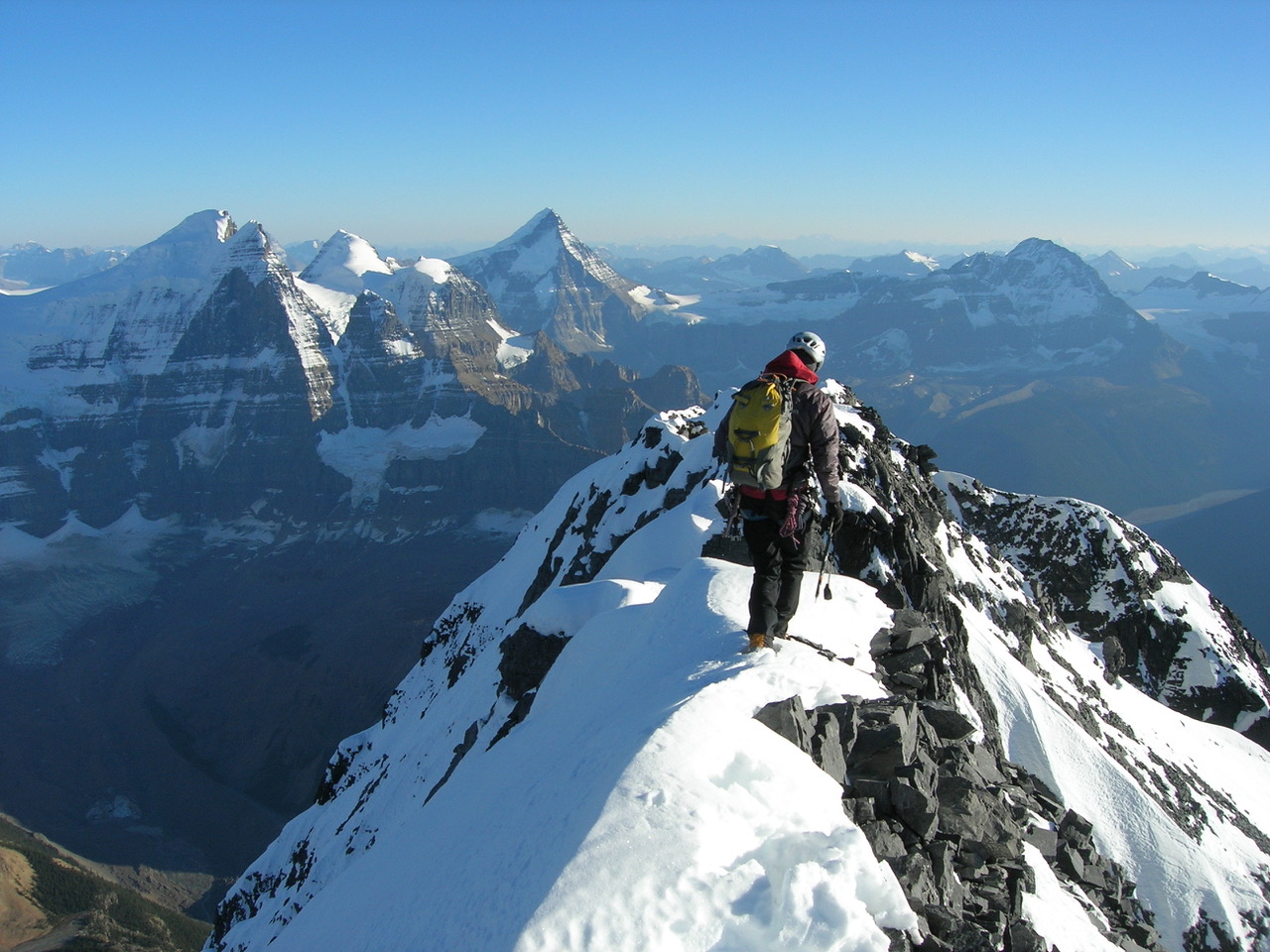
Coming down from the FA of the West Face of Alberta. Not a quality route but a quality adventure, with necky rock climbing in the back of nowhere. Photo: Eamonn Walsh.
Raph lives in Calgary (Alberta province, Canada) with his wife and two hairless cats. The cats are called Ziggy (after Bowie) and Zev (after a character in ‘Lexx’ - a low budget Canadian/German ‘alternative’ production...).
Raph is sponsored by Black Diamond, Arcteryx, Scarpa and is an ambassador to his local climbing gym, Bolder Climbing.
Raph's blog is here and he can be found on Instagram.
Raph's blog is here and he can be found on Instagram.



